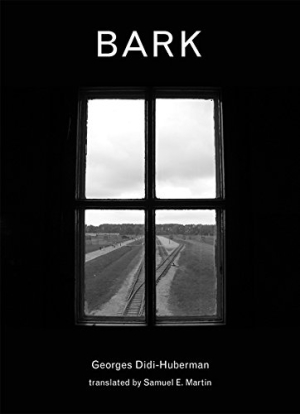Bark
Back again to the ongoing attempt to wrap one’s brain around the unwrappable, the unbrainable evil that was the Holocaust. This time in the guise of a tiny book of photos and reflections on Auschwitz-Birkenau.
Birken, German for birch, gives us Birkenau—the meadow where the birches grow—the largest of the Auschwitz death camps between 1941 and January 22, 1945, when the Nazis set the last charges of dynamite to destroy evidence of the crematory ovens before the first soldiers of the Red Army arrived. “This is why the ground assumes such importance for a visitor to this place. One has to look as an archaeologist looks: in this vegetation lies an immense human desolation; in these rectangular foundations and these heaps of bricks lies all the horror of the mass gassings; … in these tranquil marshy surfaces lie the ashes of countless people murdered.”
Georges Didi-Huberman’s grandparents were murdered in front of these same birches. During his visit on a hot June day back in 2011, with nature “flourishing on all sides: innocent, brimming, persisting in its work of life,” he was of a mind that he could only point his camera aimlessly, without really looking, but it was these photographs that provided him the means to create a poetic, exceedingly beautiful narrative of “words and images unseparated.”
Reviewed by
Matt Sutherland
Disclosure: This article is not an endorsement, but a review. The publisher of this book provided free copies of the book to have their book reviewed by a professional reviewer. No fee was paid by the publisher for this review. Foreword Reviews only recommends books that we love. Foreword Magazine, Inc. is disclosing this in accordance with the Federal Trade Commission’s 16 CFR, Part 255.

